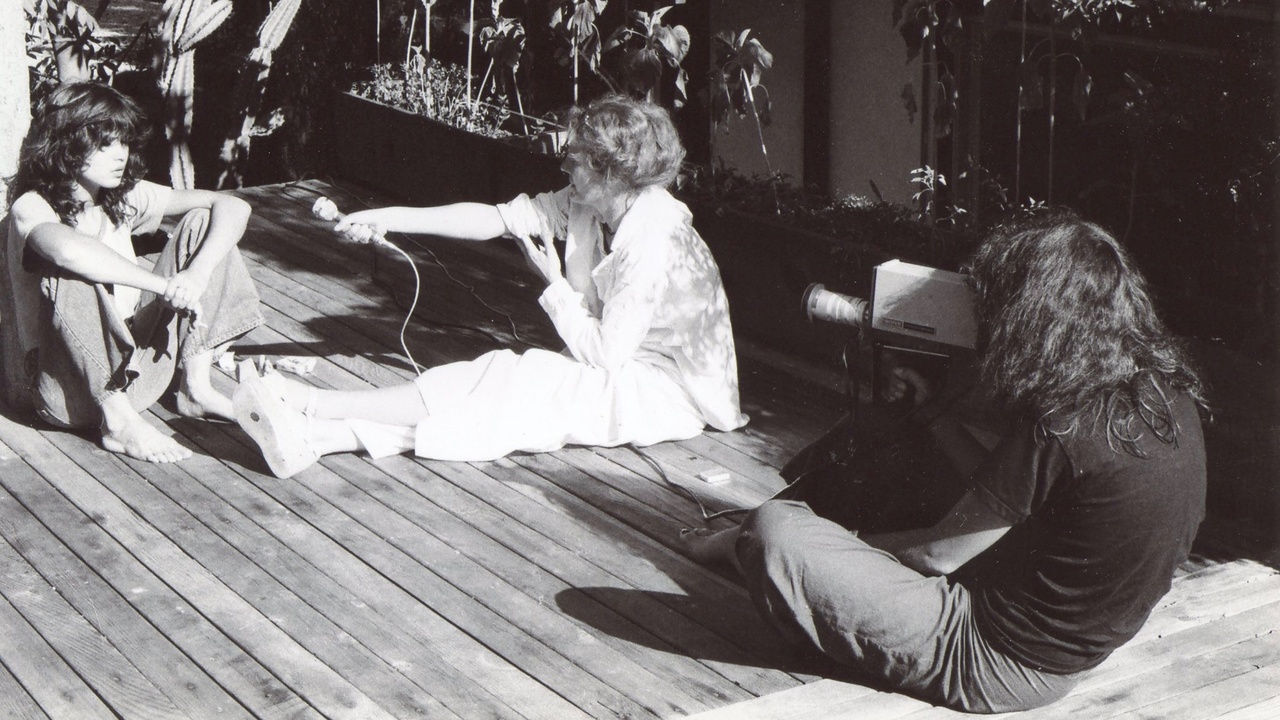If you are interviewing somebody who gets interviewed a lot, and they compliment you on the quality of your questions, you are probably doing something right. This happened on multiple occasions to Delphine Seyrig during her 1981 documentary Be Pretty and Shut Up! Seyrig is one of those actresses whose resume can astonish. Although she is best known in the United States for Daughters of Darkness, a 1970s lesbian vampire film, her resume includes such iconic films as Rober Frank’s Pull My Daisy (written and narrated by Jack Kerouac), Alain Resnais’ Last Year at Marienbad, and Bunuel’s The Discreet Charm of the Bourgeoisie. Seyrig was fluent in German, English and French, and she made movies in all three languages. As her international fame grew, she became a leading proponent of feminist causes. In 1975 she co-founded a feminist video collective. That same year, she began filming interviews for a project called Be Pretty and Shut Up.
The Bechdel Test was first introduced to the public in a 1985 comic strip called “Dykes to Watch Out For” by Alison Bechdel. The test is usually applied to fiction, and posits the question: Do women in this oeuvre have conversations with each other that aren’t about men? When Seyrig asked actresses in 1975 if they had ever been in such a film project, most of them seemed surprised by the question. It is not a question that many of the actresses working in 1975 had even pondered. But as they do consider it, the results are revelatory. The film itself is spare. All of the opening credits are spoken. Seyrig also provides real-time translations of all the Hollywood actresses as they speak. If you are watching this film in French, the first time that words appear on the screen are in the closing credits, which are spray-painted. This spareness creates a sort of intimacy. Of the 22 actresses interviewed, all but Shirley MacLaine are interviewed by Seyrig herself. MacLaine’s inclusion (in a clip from French television) is useful for an important point that she makes. Before the Hays Code, women fared much better in cinema.

Alison Bechdel, “Dykes to Watch Out For,” 1985
The Hollywood actresses were interviewed in 1975, and the French actresses in 1976. Some of the interviews are downright chilling. Such is the case with Marie Schneider, whose experiences with Last Tango in Paris were still a fresh wound at the time. The first round of questions asks the actresses if they would have chosen their profession if they had been men. A surprisingly large number say NO. Jane Fonda details (in French) the many physical changes that the studio demanded of her appearance. A common motif is when actresses want to give their characters depth, and find themselves shot down for not conforming to the male gaze. There is much discussion of ageism, and the fact that young actresses were expected to couple with older male stars. Although the film was released 40 years ago, many of the issues that women faced then are still relevant. It’s way too easy to imagine actresses born after this film was released being just as surprised by the same questions.


